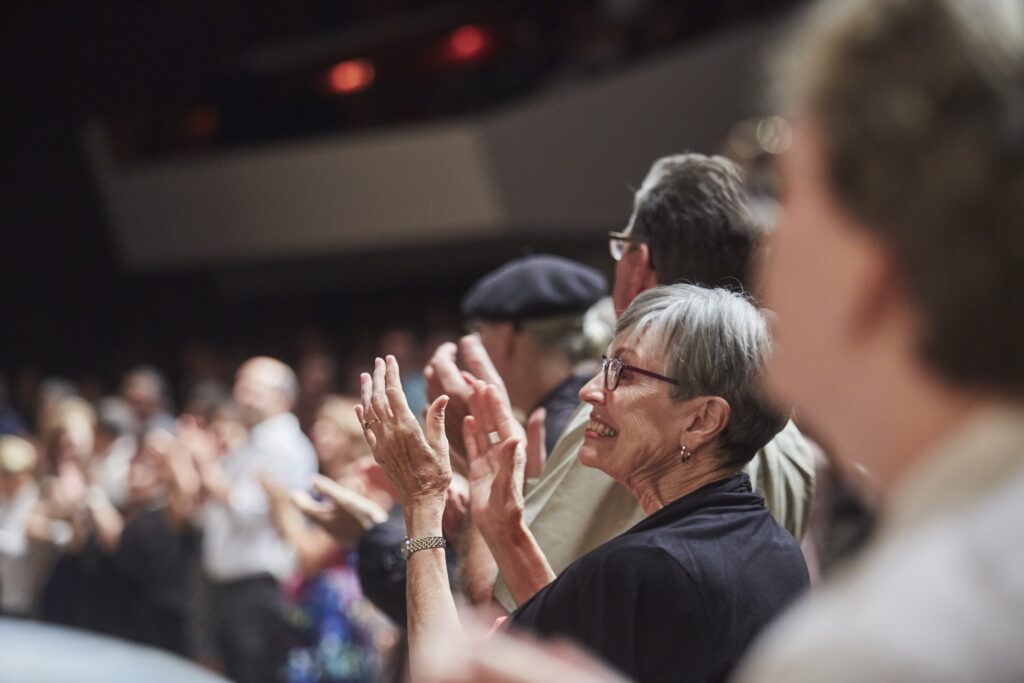Are you about to attend your first live orchestra performance? Here are answers to a few questions you may find yourself wondering from your seat in the concert hall!
Symphony, Philharmonic or Orchestra?
A symphony is a large-scale musical composition. An orchestra is a group of musicians with a variety of instruments. Philharmonic is from the Italian filarmonico, which translates to “loving harmony.” While they each have a different definition, all three words are often used interchangeably to describe a group of musicians performing together with a combination of string, woodwind, brass, and percussion instruments.
What makes up an orchestra?
Orchestras are made up usually of multiple sections of instruments organized by their families (string, brass, woodwind, and percussion instruments). Some orchestral music may also include piano, harp and even electric guitars! A conductor leads the orchestra from the front of the stage using a baton. Conductors use specific gestures to set the tempo and communicate with musicians. The size of orchestras can vary widely depending on what instruments are needed to perform the music on the concert program. The HPO has had nearly 100 musicians on stage together for a concert, while other concerts may feature as few as 20 musicians!
What is a Concertmaster?
The concertmaster is the leader of the first violin section in an orchestra. After the conductor, they are the second-most significant leader in an orchestra. The concertmaster usually sits to the left of the conductor and closest to the audience.

What should I wear?
Wear whatever makes you feel comfortable! At a typical HPO concert, you might see some audience members in suits and dresses while others choose jeans and a t-shirt.
Why does it mean when a piece of music has ‘movements’?
Movements of a piece of music are essentially like “chapters” of the music. Composers use movements to organize a piece of music, build upon themes and set the pace and overall tone of the work.
Often, there will be a brief pause between movements but sometimes a composer will have the musicians go from one movement to the next with no interruption. This is called an attacca.

When should I clap?
There are two reasons to applaud at an orchestra concert: as a greeting, and to show appreciation. Audience members may clap when the Concertmaster walks on stage to their seat and again when the Conductor walks on stage a few moments later.
Audiences members clap again to show their appreciation at the end of a piece of music. Some longer pieces may have several sections, or movements, separated by a brief, silent pause. The audience does not applaud between movements of a piece. The concert program will list the movements in each piece, so you will know how many there are; applause is usually reserved for the end of the last movement. If you’re not sure that it’s over just follow the rest of the audience or wait until the conductor turns around to bow!

